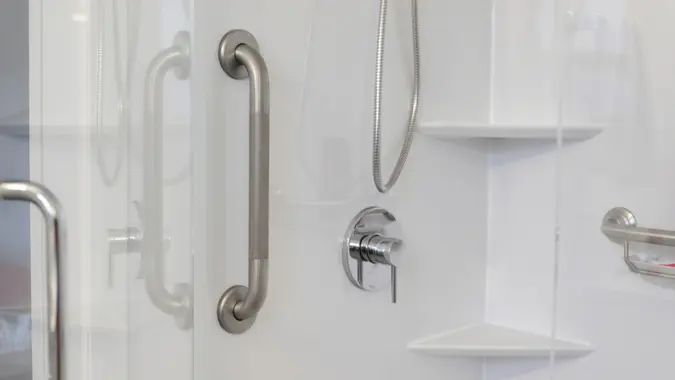5 Proven Frugal Strategies for a Low-Cost Retirement Relocation

Commitment to Our Readers
GOBankingRates' editorial team is committed to bringing you unbiased reviews and information. We use data-driven methodologies to evaluate financial products and services - our reviews and ratings are not influenced by advertisers. You can read more about our editorial guidelines and our products and services review methodology.

20 Years
Helping You Live Richer

Reviewed
by Experts

Trusted by
Millions of Readers
Planning for retirement and dreaming about a move? Maybe you’re no longer tied to an area for your job or you simply want to experience what another city has to offer. And if you’re moving to benefit from lower costs of living and lower taxes, rest assured you’re not alone.
Inflation has many seniors searching for new places to enjoy their retirement. Whatever your reason, moving is an additional factor that can deplete your savings and impact your budget — but it doesn’t have to be expensive. Here are five strategies for making a low-cost retirement relocation.
Choose the Right Place
According to The Motley Fool, in 2024, the 10 most affordable states to retire in are Mississippi, Oklahoma, Kansas, Alabama, West Virginia, Georgia, Missouri, Iowa, Arkansas and Tennessee, in that order. This ranking is based on a range of considerations, including the costs of living — housing, utilities, health care — as well as retirement incomes and tax-friendliness.
You’ll likely fare better moving to one of these Midwestern or Southern states than you might in the Northeast and on the West Coast. Likewise, it’s best to avoid Hawaii, Washington, D.C., Massachusetts, California, New York and Alaska if you’re hoping to relocate and live on a budget.
Cut Your Transportation Costs
If you have two or more cars, you can reduce monthly costs by selling one. Alternatively, you can replace one or more of your vehicles with a cheaper one.
If you want to go extra frugal and reduce your impact on the environment, consider going carless and opting for public transportation. Whether a bus or a bike, you’ll cut out car payments, car insurance, gas and maintenance costs from your monthly budget. When selecting your new home location, choose a place with access to public transportation or within walking distance of your needs.
Choose a Smaller Home
As you transition into retirement, you may need less space or even prefer a smaller home that requires less maintenance. Moving to a small or tiny home can save money in mortgage payments, insurance and maintenance costs, in addition to simplifying your day-to-day responsibilities.
If you want to take this a step further, experts point out that renting a home saves you property and maintenance costs. That said, this option isn’t for everyone, as you run the risk of rent increases and eviction and won’t have the ability to earn equity or make certain home improvements.
Sell Things You Don’t Need
There are some things you have that you can sell because you don’t need them anymore. This can be a fairly easy decision when it comes to selling your old work clothes, which likely won’t have any real sentimental value.
You can sell them online or have a yard sale. Items like toys, baby clothes and other used items might be more difficult to sell, but if you decide to do so, you’ll lower your retirement relocation costs. At the very least, consider donating items to reduce what you have to move.
Use a Moving Company That Specializes in Small Loads
Using PODS containers instead of rental trucks, you won’t have to drive your boxes to the new location or pay extra for gas and mileage. PODS and similar services can save you money as they handle the moving container after you load it yourself. Plus, you can load and unload the units on your schedule and opt for long-term storage if necessary. A long-distance move might be around $1,000 by using PODS while using a traditional mover could cost $5,000 or more.
 Written by
Written by  Edited by
Edited by 

























